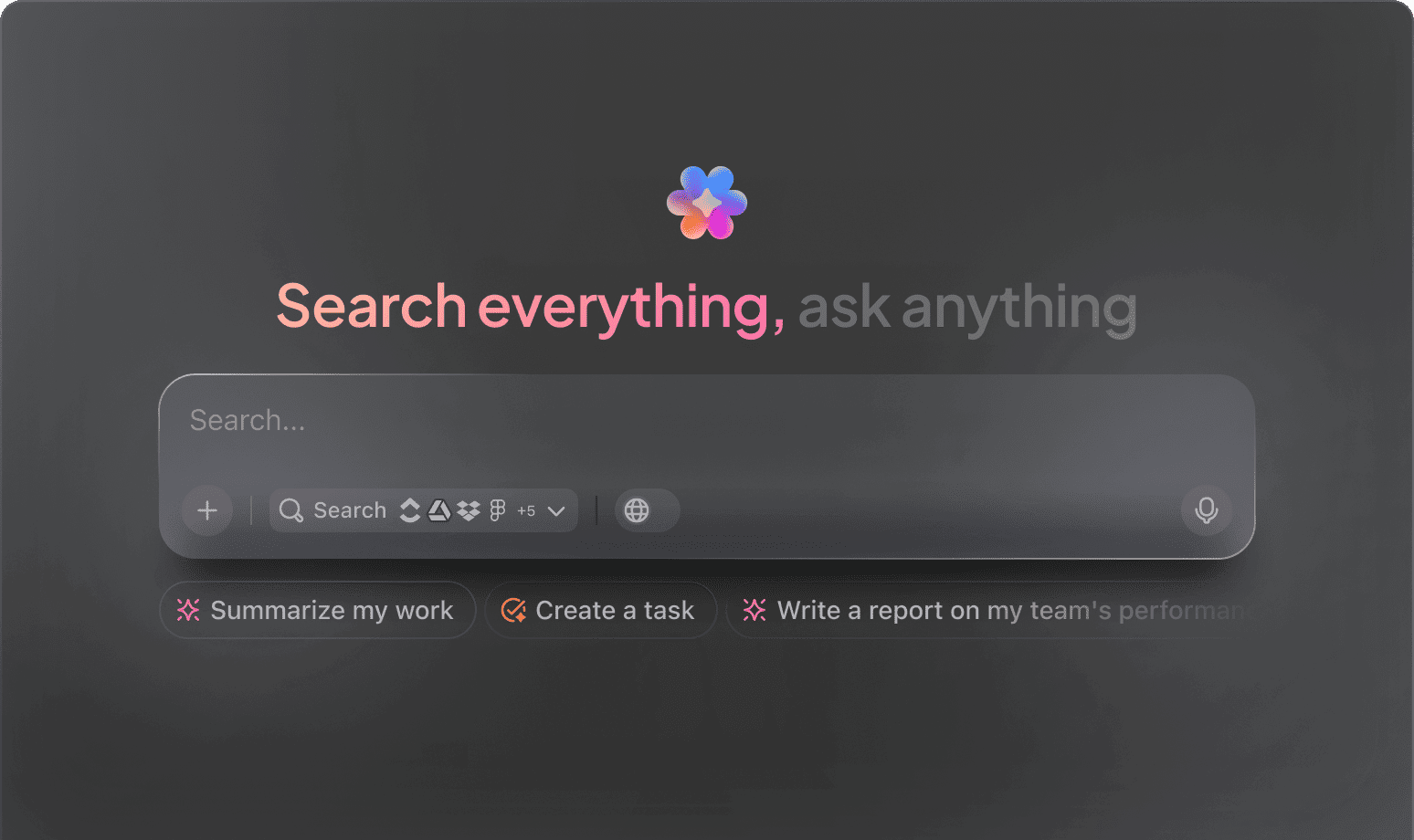AI Issue Tracking
Top AI Prompts for Efficient Issue Tracking
Identify bugs faster, organize your team's workflow, and enhance resolution speed with ClickUp Brain's intelligent prompts.
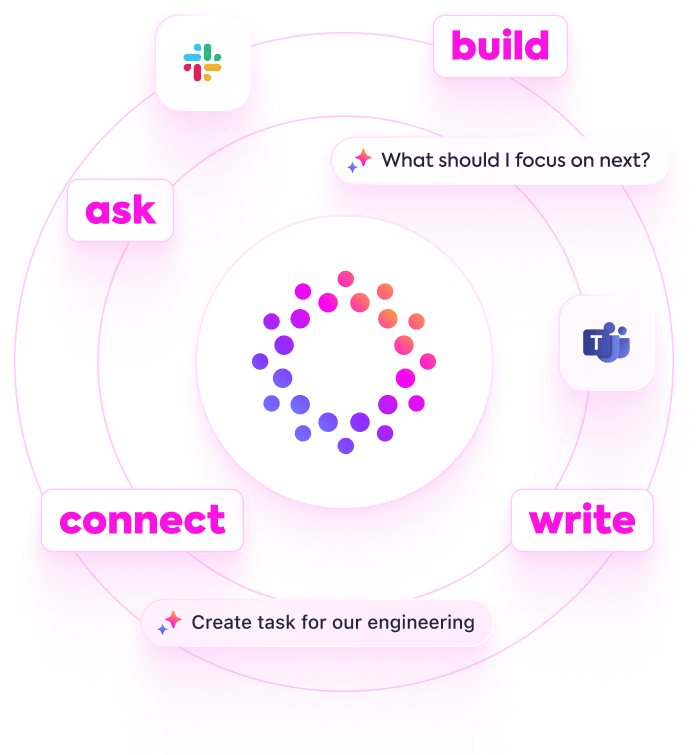
Trusted by the world’s leading businesses
AI Enhancements for Issue Management
Revolutionizing Issue Tracking with AI-Powered Prompts
Managing issues effectively is critical to keeping projects on track and teams aligned.
From identifying bugs to prioritizing fixes and tracking resolutions, issue tracking demands precision and clarity amidst constant updates and collaboration. AI prompts are reshaping how teams handle these challenges.
Teams now leverage AI to:
- Quickly surface relevant past issues and solutions
- Generate detailed bug reports and task descriptions with minimal effort
- Extract key insights from lengthy error logs and communications
- Transform scattered comments into organized action plans and checklists
Integrated into familiar tools—such as documents, boards, and task trackers—AI goes beyond simple assistance. In solutions like ClickUp Brain, it actively streamlines issue workflows, turning raw data into clear, prioritized tasks.
Comparing ClickUp Brain with Conventional Solutions
Why ClickUp Brain Stands Apart
ClickUp Brain integrates seamlessly, understands your context deeply, and empowers you to act swiftly—cutting down on needless explanations.
Conventional AI Assistants
- Constantly toggling between apps to collect details
- Repeating your objectives with every new query
- Receiving generic, irrelevant feedback
- Hunting through multiple platforms to locate a single issue
- Interacting with AI that only processes input passively
- Manually switching among different AI engines
- Merely another add-on in your browser
ClickUp Brain
- Instantly accesses your tasks, documentation, and team communications
- Retains your past interactions and project aims
- Delivers precise, context-aware solutions
- Provides consolidated search across all your resources
- Enables voice commands through Talk to Text
- Automatically selects the optimal AI model: GPT, Claude, Gemini
- Offers a dedicated desktop app for Mac & Windows designed for efficiency
Prompts for Issue Tracking
15 Powerful AI Prompts for Issue Tracking (Tested in ClickUp Brain)
Enhance your issue management—prioritization, resolution, and reporting simplified.

Identify 5 common root causes for recurring bugs in our latest software release, based on the ‘Bug Reports Q2’ document.
Use Case: Accelerates pinpointing problem areas by analyzing historical data.
ClickUp Brain Behaviour: Extracts and summarizes recurring issues from linked reports to suggest focus points.

What are the top user-reported pain points in our mobile app’s login flow from recent support tickets?
Use Case: Guides UX improvements by highlighting frequent user frustrations.
ClickUp Brain Behaviour: Aggregates feedback from support documents and flags key obstacles users face.

Draft a detailed issue resolution plan for the ‘Payment Gateway Timeout’ error, referencing linked troubleshooting logs and past fixes.
Use Case: Aligns support and development teams on a clear action path.
ClickUp Brain Behaviour: Pulls relevant notes and previous solutions from documents to build a structured plan.

Summarize performance differences between versions 3.2 and 3.3 using data from the ‘Release Metrics’ doc.
Use Case: Supports informed decisions on deployment and rollback strategies.
ClickUp Brain Behaviour: Extracts and compares key metrics to provide a concise version comparison.

List the most frequent error codes encountered in the API logs, referencing the ‘API Monitoring’ folder.
Use Case: Helps prioritize debugging efforts based on error prevalence.
ClickUp Brain Behavior: Scans logs to identify and rank recurring error codes with context notes.

From the ‘QA Test Cases’ doc, generate a checklist for regression testing after the latest patch deployment.
Use Case: Simplifies test planning by converting documented criteria into actionable steps.
ClickUp Brain Behavior: Extracts test points and formats them into a clear checklist within a task or document.

Summarize 3 emerging trends in bug reporting tools and workflows from recent industry analyses.
Use Case: Keeps your issue tracking process aligned with best practices.
ClickUp Brain Behavior: Identifies patterns and innovations from linked research and review documents.

From the ‘Customer Feedback Q1’ doc, summarize key feature requests related to issue tracking improvements.
Use Case: Guides product enhancements based on user priorities.
ClickUp Brain Behavior: Analyzes feedback to highlight recurring themes and suggestions.

Write concise and clear notification messages for issue status updates, following the tone guidelines in ‘CommunicationStyle.pdf’.
Use Case: Speeds up crafting consistent and user-friendly alerts.
ClickUp Brain Behavior: References tone documents to propose message variations for interface use.

Summarize recent changes in data privacy regulations affecting issue tracking and reporting.
Use Case: Ensures compliance by keeping teams informed of relevant legal updates.
ClickUp Brain Behavior: Synthesizes linked compliance documents; Brain Max can supplement with public data if available.

Generate guidelines for categorizing and tagging issues according to severity and type, referencing internal policy docs.
Use Case: Standardizes issue classification for better workflow management.
ClickUp Brain Behavior: Extracts rules and examples from documents to create a clear tagging framework.

Create a checklist for verifying fixes before closing issues, based on ‘QA Closure Criteria’ and recent release notes.
Use Case: Helps QA teams maintain quality standards consistently.
ClickUp Brain Behavior: Identifies closure requirements and formats them into a practical task list.

Compare issue resolution times across different teams using data from the ‘Support Metrics’ folder.
Use Case: Supports performance evaluation and resource allocation decisions.
ClickUp Brain Behavior: Summarizes and contrasts team metrics into an easy-to-read summary or table.

What new automation opportunities exist to reduce manual steps in issue triage since 2023?
Use Case: Helps teams adopt efficiency improvements based on latest trends.
ClickUp Brain Behavior: Synthesizes insights from internal reports and industry updates to highlight automation potentials.

Summarize critical user experience issues reported in the Asia-Pacific region from the ‘Regional Feedback’ folder.
Use Case: Drives targeted improvements for specific markets.
ClickUp Brain Behavior: Extracts and prioritizes user-reported problems from surveys, feedback notes, and tickets.
Accelerate Issue Resolution with ClickUp Brain
Cut down repetitive fixes, unify your team’s efforts, and produce superior solutions through AI-enhanced issue tracking workflows.





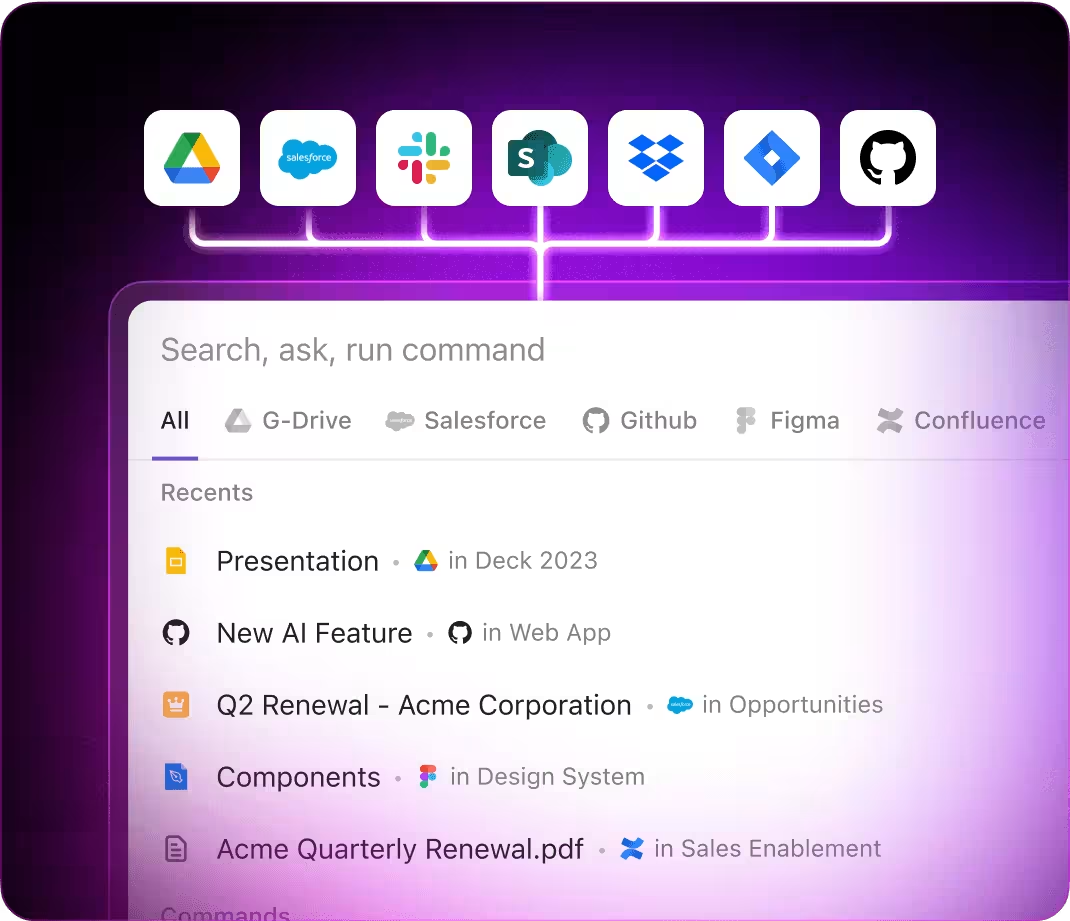
AI Applications
Key Ways AI Prompts Enhance Issue Tracking with ClickUp Brain
Speed up problem resolution, boost precision, and discover smarter fixes using AI-driven prompts in your issue management process
From Bug Reports to Resolution Plans
Tracking issues usually starts with fragmented reports and unclear details. ClickUp Brain organizes these into clear, actionable resolution plans—right inside ClickUp Docs.
Leverage ClickUp Brain to:
- Convert scattered bug notes into comprehensive issue templates
- Produce fresh troubleshooting approaches informed by historical case data (using context-sensitive AI writing)
- With Brain Max, instantly explore previous issue logs, team feedback, and related documentation to accelerate your problem-solving process.
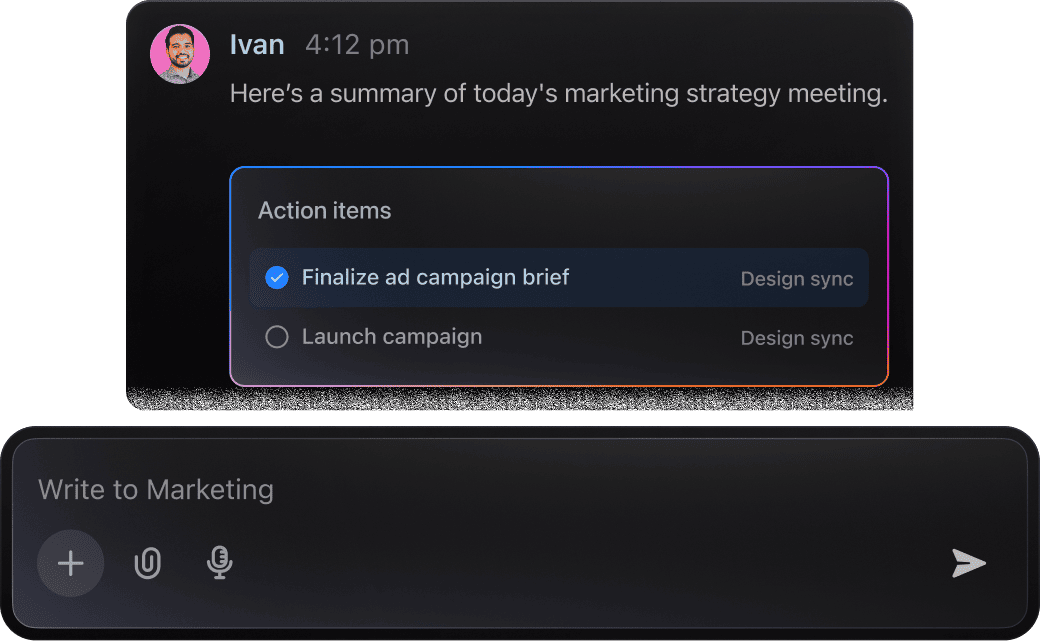
From Design Concepts to Engineering Execution
Engineering teams often face overwhelming details in task comments and design documents. ClickUp Brain simplifies this by pinpointing key action points, identifying risks early, and crafting clear next steps from complex notes.
Leverage ClickUp Brain to:
- Condense lengthy technical conversations captured in tasks or Docs
- Convert detailed design annotations into actionable engineering assignments
- Automatically generate issue logs or transition briefs without extra work
- With Brain Max, instantly retrieve past decisions, component analyses, or project discussions across your workspace—eliminating tedious searches through CAD documentation.
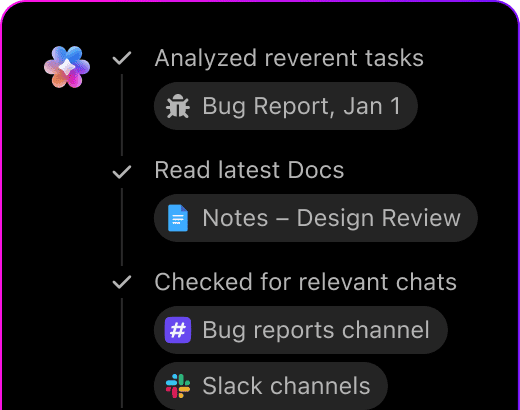
Issue Tracking with ClickUp Brain
Managing bug reports and feature requests involves sorting through countless comments, logs, and updates. ClickUp Brain simplifies this process—extracting key details and crafting clear issue descriptions that align with your team's style.
Leverage ClickUp Brain to:
- Analyze conversation logs for critical problem points
- Create concise, consistent issue summaries across projects
- Convert user feedback into prioritized tasks or bug fixes
- Brain Max enhances this by providing quick access to related past issues or similar project data, even over extended development timelines.
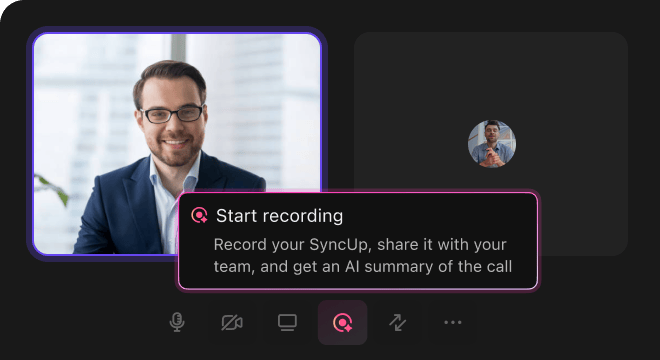
AI Advantages
How AI Prompts Revolutionize Issue Tracking with ClickUp Brain
Integrating AI prompts into your issue tracking process enhances every step:
- Accelerate problem identification: Quickly transform vague reports into clear, actionable issues
- Reduce resolution delays: Detect recurring bugs by analyzing historical tickets and feedback
- Align your team: AI-crafted summaries and updates ensure everyone stays informed
- Make informed choices: Generate insights on root causes and compliance requirements
- Drive continuous improvement: Uncover innovative solutions beyond standard fixes.
All these capabilities work together inside ClickUp, turning your AI-generated content into tasks, documentation, and dashboards that propel your projects forward.
Prompt Guidance
Crafting Effective Prompts for Issue Tracking
Clear prompts unlock precise solutions.

Define the issue tracking scenario clearly
Vague prompts yield broad responses. Specify details such as project type (e.g., “software development sprint” or “marketing campaign”), issue priority (e.g., “critical bugs” or “minor enhancements”), or team role (e.g., “QA testers” or “product managers”).
Example: “Outline steps to resolve high-priority bugs in a mobile app release cycle.”

Use comparative prompts to evaluate solutions
AI excels at contrasting alternatives. Use prompts like “compare X vs Y” to assess different bug tracking methods, tool features, or resolution strategies.
Example: “Compare the effectiveness of Kanban vs Scrum for managing software defects.”

Frame prompts around specific tasks
Approach your prompt as a clear task for AI. Instead of “Suggest issue tracking methods,” focus on desired outcomes:
Example: “Generate a workflow for prioritizing and assigning customer-reported issues in a SaaS platform.”

Specify the desired output format
Need a priority matrix, action plan, status report template, or escalation path? Indicate it explicitly. AI delivers better when the response structure is clear.
Example: “Provide a bullet list of five key metrics to monitor issue resolution progress with explanations.”
Optimize Issue Tracking with ClickUp Brain
ClickUp Brain goes beyond simple task lists—it's your intelligent partner for managing every detail in your issue tracking process.





